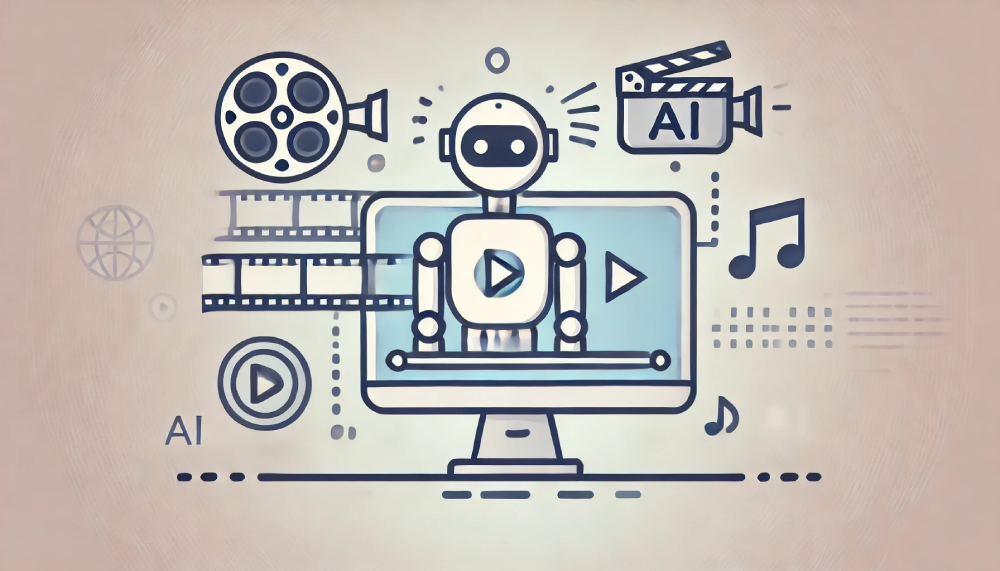
Artificial Intelligence (AI) has its influence spans across industries, from healthcare and finance to retail and education. One of the most intriguing applications of AI is its growing role in the media industry, reshaping both content creation and consumption. AI-powered tools are completely rewriting and reinventing the way stories are told, shared, and consumed, resulting in more efficient production processes, personalized content recommendations, and new opportunities for audience engagement.
Evolution of AI in Media
AI’s journey in the media has been long and gradual. Early applications of AI were limited to simple automation tasks such as spell-checking or grammar suggestions. However, the last decade has witnessed tremendous advancements in AI technologies, including natural language processing (NLP), machine learning (ML), and computer vision, which are all driving new possibilities for media companies.
The most important factor behind this transformation has been the ability of AI algorithms to process and analyze massive amounts of data, enabling deeper insights into consumer behavior and creative processes.
With AI now capable of understanding and generating human-like content, the lines between human creativity and machine efficiency are beginning to blur. This evolution is giving rise to a new era of AI-enhanced media production and consumption.
AI and Content Creation: Automating Creativity
One of the most significant impacts AI has had on media is in the realm of content creation. AI is no longer just a backend tool for analytics; it is now a front-end tool capable of generating and enhancing creative work.
Automated Writing and Journalism
AI-powered writing tools, such as OpenAI’s GPT models and Google’s GEMINI, have begun to produce human-like text with incredible accuracy. These tools are already being used in journalism to automate the creation of routine news reports.
For example, The Associated Press and Reuters use AI to generate reports on sports and finance. These AI-generated articles are often indistinguishable from those written by human journalists, particularly for straightforward topics that require minimal creativity but a high level of data interpretation.
Beyond the realm of basic reporting, AI is also beginning to assist in more creative forms of writing. Tools like Jasper AI or Writesonic are increasingly being used by bloggers, marketers, and copywriters to draft blog posts, articles, and even entire marketing campaigns. These tools are trained on vast datasets and can produce high-quality written content with minimal human input. This not only saves time but also allows for rapid scaling of content production.
Video and Film Production
AI is also making waves in video production. Machine learning algorithms can now assist in various stages of the filmmaking process, from pre-production to post-production. One such example is AI-powered script analysis tools that can predict the potential success of a movie based on its script. AI algorithms analyze the storyline, character arcs, and audience preferences to forecast box office performance, allowing producers to make more informed decisions before investing in production.
Post-production is another area where AI is proving invaluable. AI-driven video editing tools, such as Adobe’s Sensei and DaVinci Resolve’s Neural Engine, can now automate labor-intensive tasks like color correction, frame interpolation, and even scene transitions. These tools not only speed up the editing process but also ensure a level of precision that was previously unattainable.
AI-Generated Visual Art and Music
AI’s creative capabilities are not limited to text and video. Tools like DeepArt and RunwayML are allowing creators to generate stunning visual art by mimicking the styles of famous artists or creating entirely new styles based on input data. AI-generated art is finding its way into advertising, film, and even fine art exhibitions.
In music, AI tools such as AIVA (Artificial Intelligence Virtual Artist) and OpenAI’s MuseNet are enabling the creation of entirely new compositions. AIVA, for instance, can generate symphonies in the style of famous composers like Beethoven or Bach, while MuseNet can create multi-instrument compositions spanning various genres. These tools are being used by musicians to explore new creative possibilities, often collaborating with AI to co-create music that pushes the boundaries of traditional composition.
AI and Content Personalization Experiences
While AI has significantly transformed content creation, its impact on content consumption is arguably even more profound. Media companies are leveraging AI to deliver highly personalized content experiences, driving engagement and customer satisfaction.
Recommendation Algorithms
One of the most visible examples of AI in media consumption is recommendation algorithms. Platforms like Netflix, YouTube, and Spotify use AI-driven algorithms to analyze users’ viewing or listening habits and recommend content tailored to their preferences. These algorithms rely on collaborative filtering, natural language processing, and deep learning techniques to provide personalized content that aligns with the viewer’s tastes.
Netflix, for example, employs AI to predict which movies or TV shows a user is most likely to enjoy based on their past viewing behavior. This level of personalization has been a critical factor in Netflix’s global success. Similarly, YouTube’s recommendation engine, powered by Google’s AI, helps users discover new content that they might not have actively searched for but are likely to enjoy based on their past behavior.
AI-based personalization extends beyond media streaming services. Social media platforms such as Facebook and X (formerly Twitter) also rely on AI to curate news feeds and deliver targeted ads. These algorithms are designed to optimize user engagement by presenting the most relevant and engaging content to each individual user.
Dynamic Content Customization
AI’s role in content personalization is not limited to recommendations. Some companies are exploring dynamic content customization, where the actual content itself changes based on the user’s preferences or behavior. For example, interactive films and video games now use AI to alter narratives or gameplay in real-time based on a user’s decisions. This creates a unique experience for every user, further enhancing engagement.
AI-driven platforms can also adjust the pacing of a story or modify the level of difficulty in a video game in response to user input. The integration of AI in dynamic content creation blurs the line between passive and interactive media consumption, providing users with a more immersive experience.
Targeted Advertising
In advertising, AI has made significant strides in delivering personalized ads to consumers. By analyzing user data such as browsing history, purchase behavior, and demographic information, AI algorithms can serve highly targeted ads that are more likely to convert. This has revolutionized digital marketing, as advertisers no longer need to rely on broad demographic targeting. Instead, they can use AI to deliver ads to individuals with a high probability of engagement.
AI is also used in programmatic advertising, where algorithms automatically buy and place ads in real-time auctions. This process, known as real-time bidding (RTB), is optimized using machine learning models that assess the value of each ad impression based on various factors, including user behavior and historical performance data. As a result, advertisers can achieve better returns on their ad spend, while consumers receive more relevant and engaging advertisements.
Ethical Considerations and Challenges
While AI’s role in transforming content creation and consumption is undoubtedly impressive, it is not without its challenges. The growing use of AI in the media raises several ethical concerns and technical challenges that need to be addressed.
Bias and Fairness
AI algorithms are only as good as the data they are trained on. If the training data is biased, the AI models will likely produce biased results. In the context of media, this can manifest in biased content recommendations, skewed news reporting, or exclusion of minority voices. Addressing these biases is critical to ensuring that AI-driven media platforms promote fairness and inclusivity.
Deepfakes and Misinformation
One of the most concerning applications of AI in media is the creation of deep fakes—hyper-realistic AI-generated videos that can manipulate audio and visual content to make it appear as though someone said or did something they did not. Deepfakes have the potential to spread misinformation and erode public trust in the media. As AI becomes more sophisticated, detecting and preventing the spread of deepfakes will become a key challenge for media companies and regulators.
Data Privacy
AI relies heavily on user data to drive personalization and recommendations. However, this raises concerns about data privacy, as consumers may not be fully aware of the extent to which their personal information is being collected and used. Media companies must ensure that they adhere to data protection regulations, such as GDPR and CCPA, while being transparent with users about how their data is being used.
Job Displacement
As AI becomes more integrated into content creation processes, there are growing concerns about job displacement in creative industries. While AI can automate routine tasks, such as data-driven journalism or video editing, there is fear that it could eventually replace human creatives altogether. However, many experts argue that AI should be viewed as a tool that enhances human creativity, rather than a replacement for it. The key will be finding the right balance between human input and AI-driven automation.
Future Directions
The future of AI in media holds exciting possibilities:
- AI-Generated News Anchors: AI-powered avatars could deliver newscasts, providing a more personalized and engaging experience.
- AI-Curated Content Platforms: Platforms could leverage AI to create personalized content experiences, tailored to individual users’ tastes and preferences.
- AI-Enhanced Storytelling: AI could be used to enhance storytelling by generating new ideas, characters, and plotlines.
- AI-Driven Content Monetization: AI could help media companies develop new revenue streams by analyzing user behavior and identifying opportunities for targeted advertising and premium content.
Looking ahead, AI is poised to play an even greater role in media, further blurring the lines between human creativity and machine efficiency. It is crucial to address the associated challenges and ethical considerations to ensure the responsible and equitable use of AI in media.
SOURCE:
